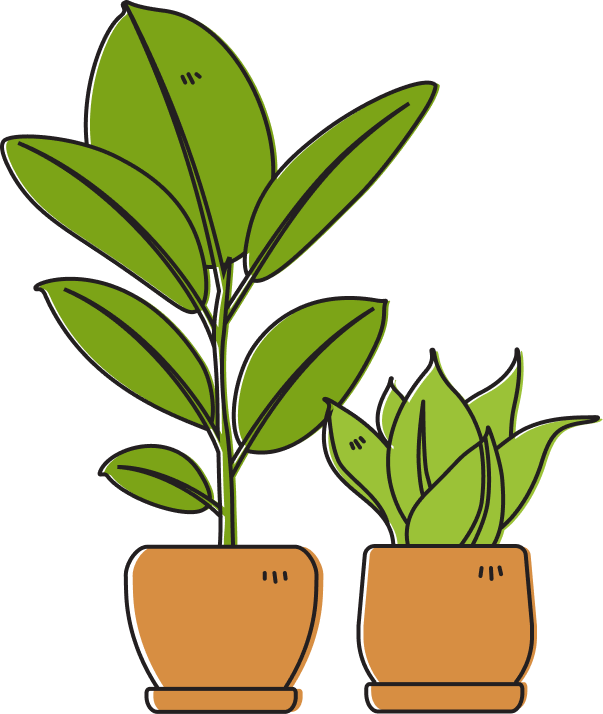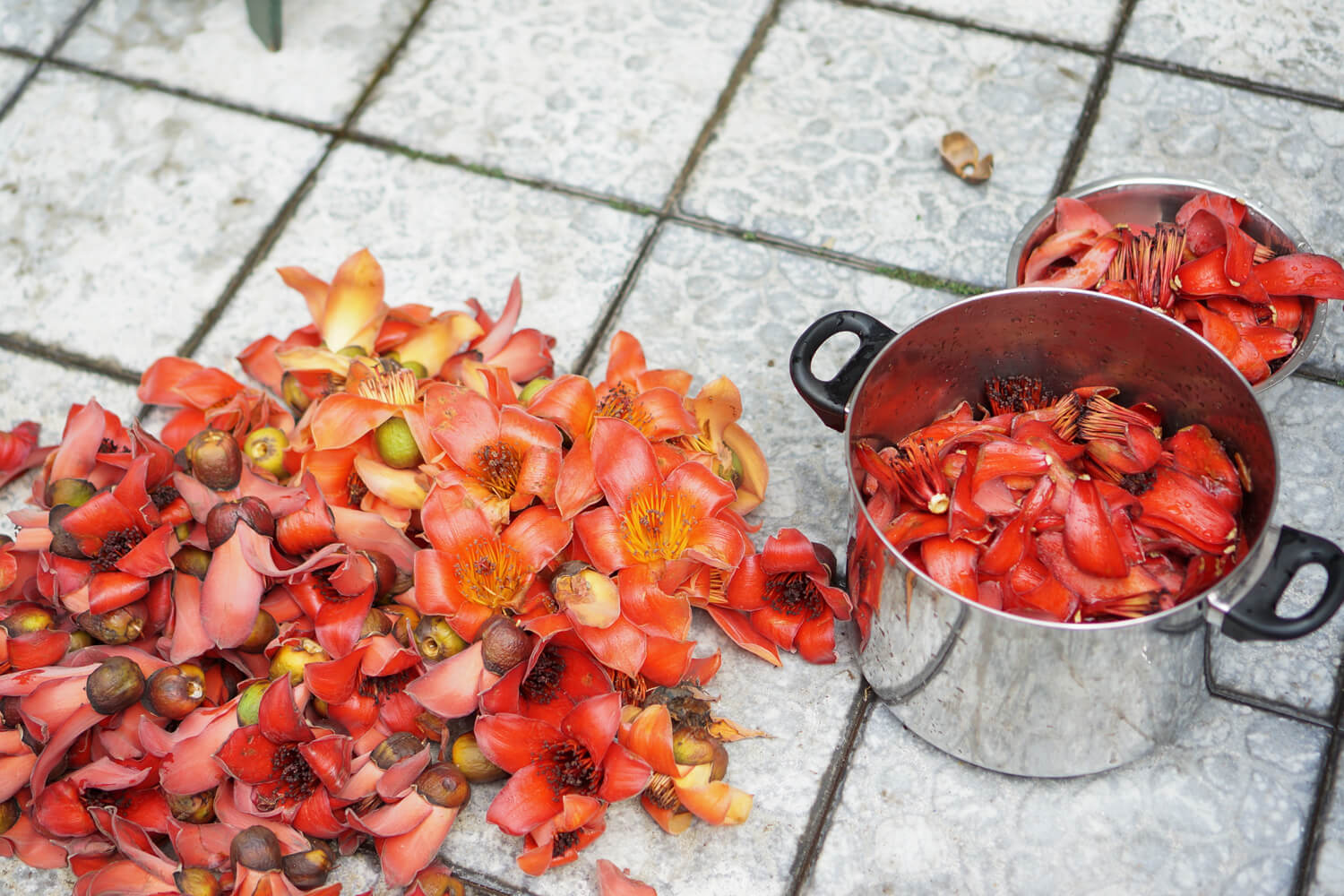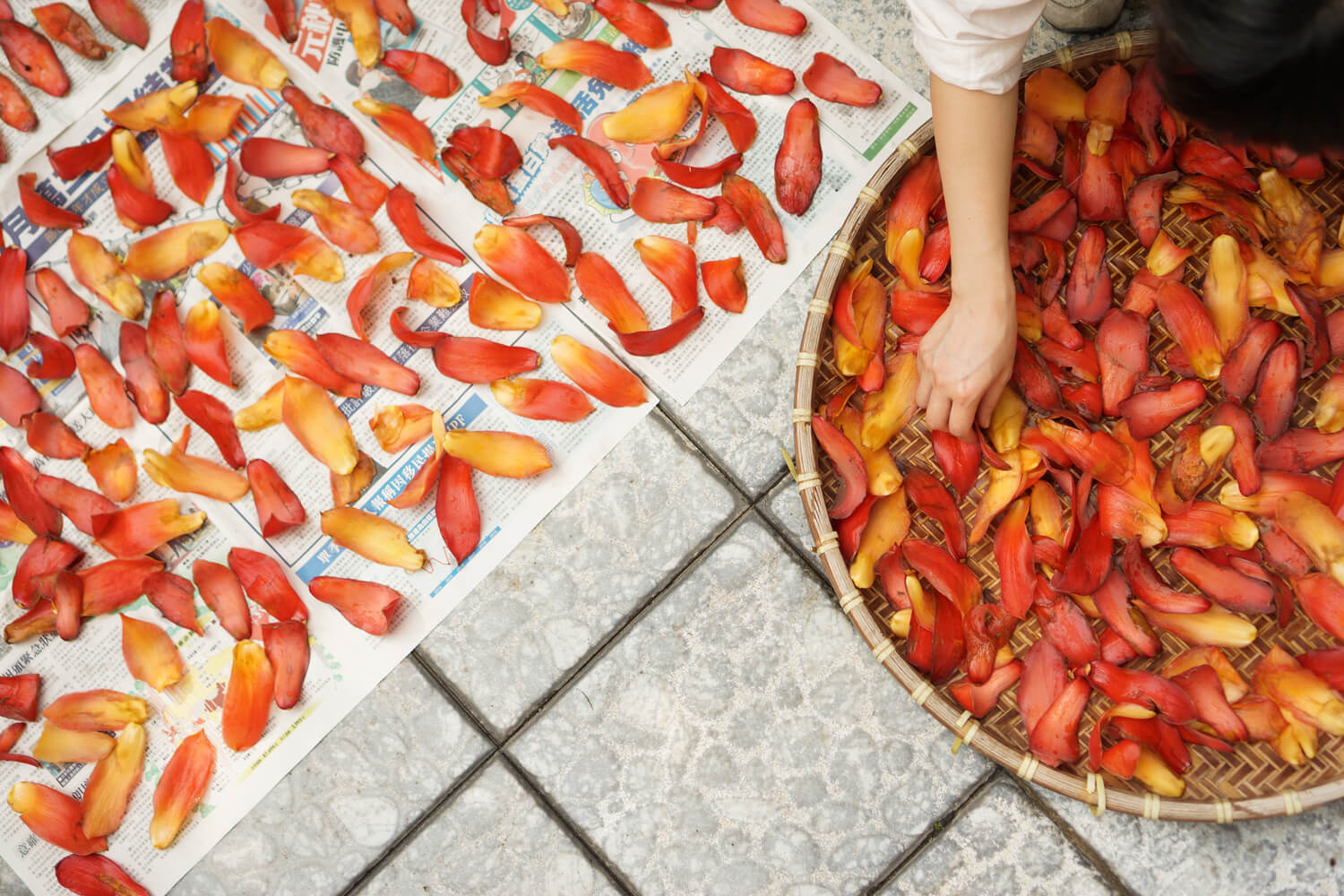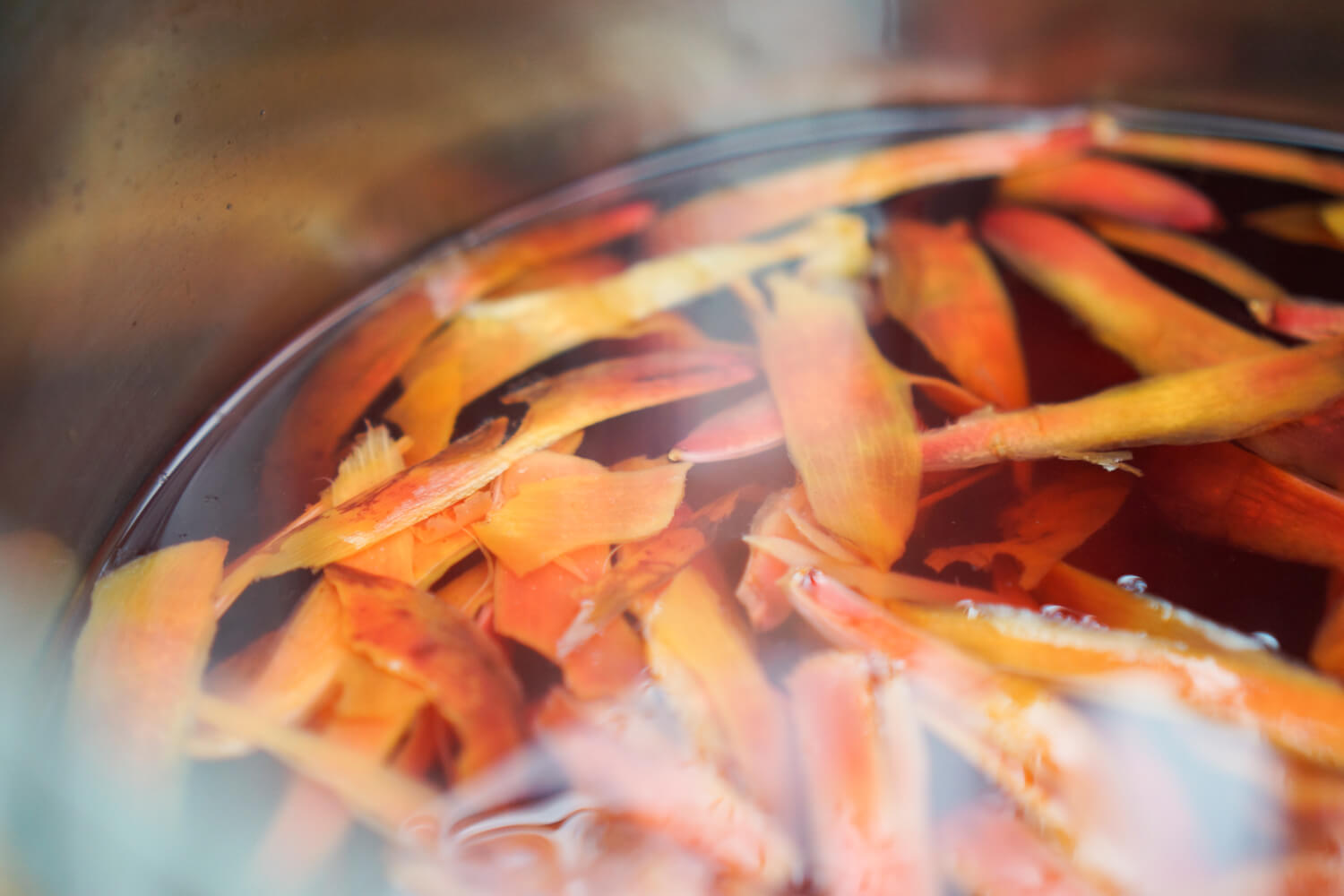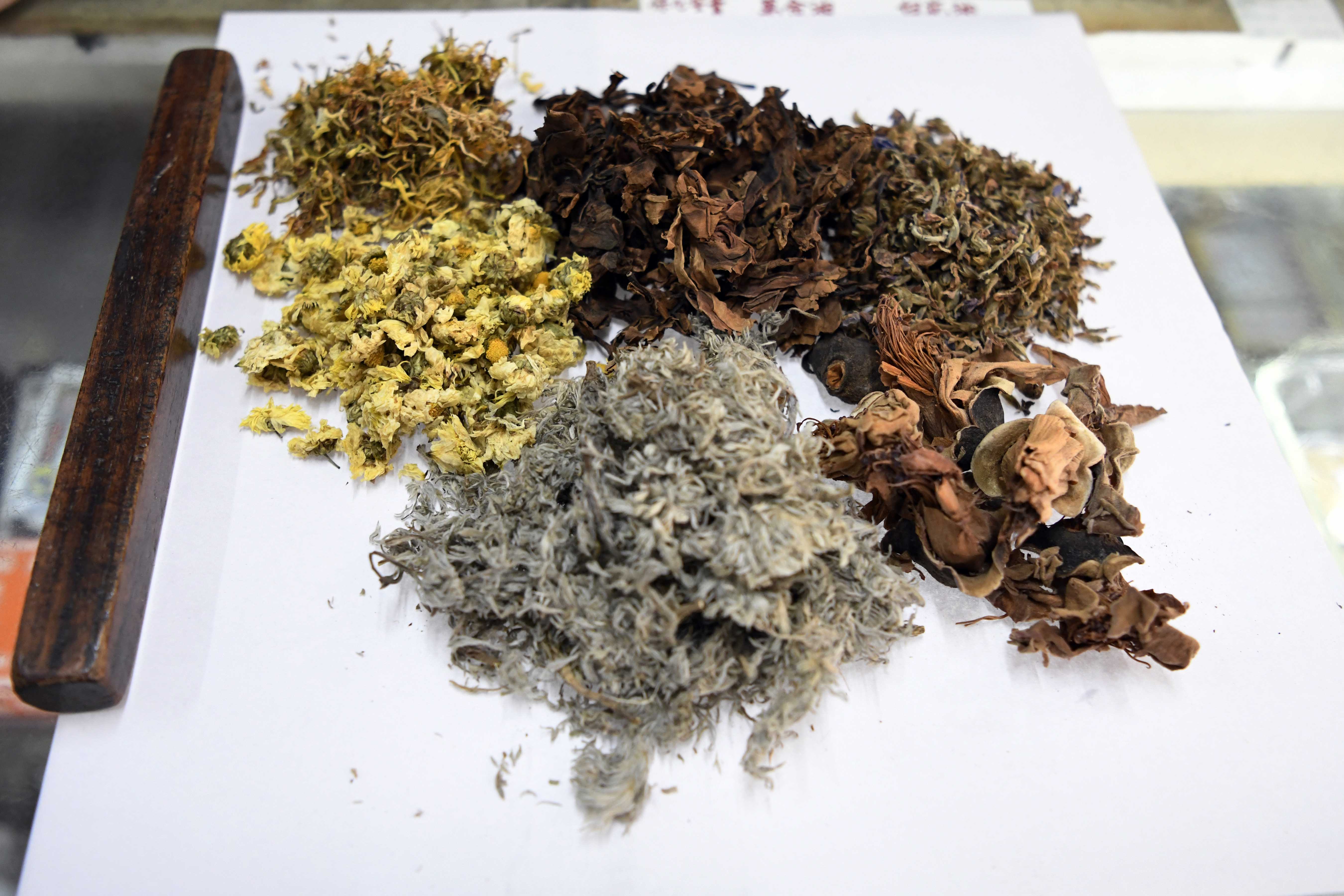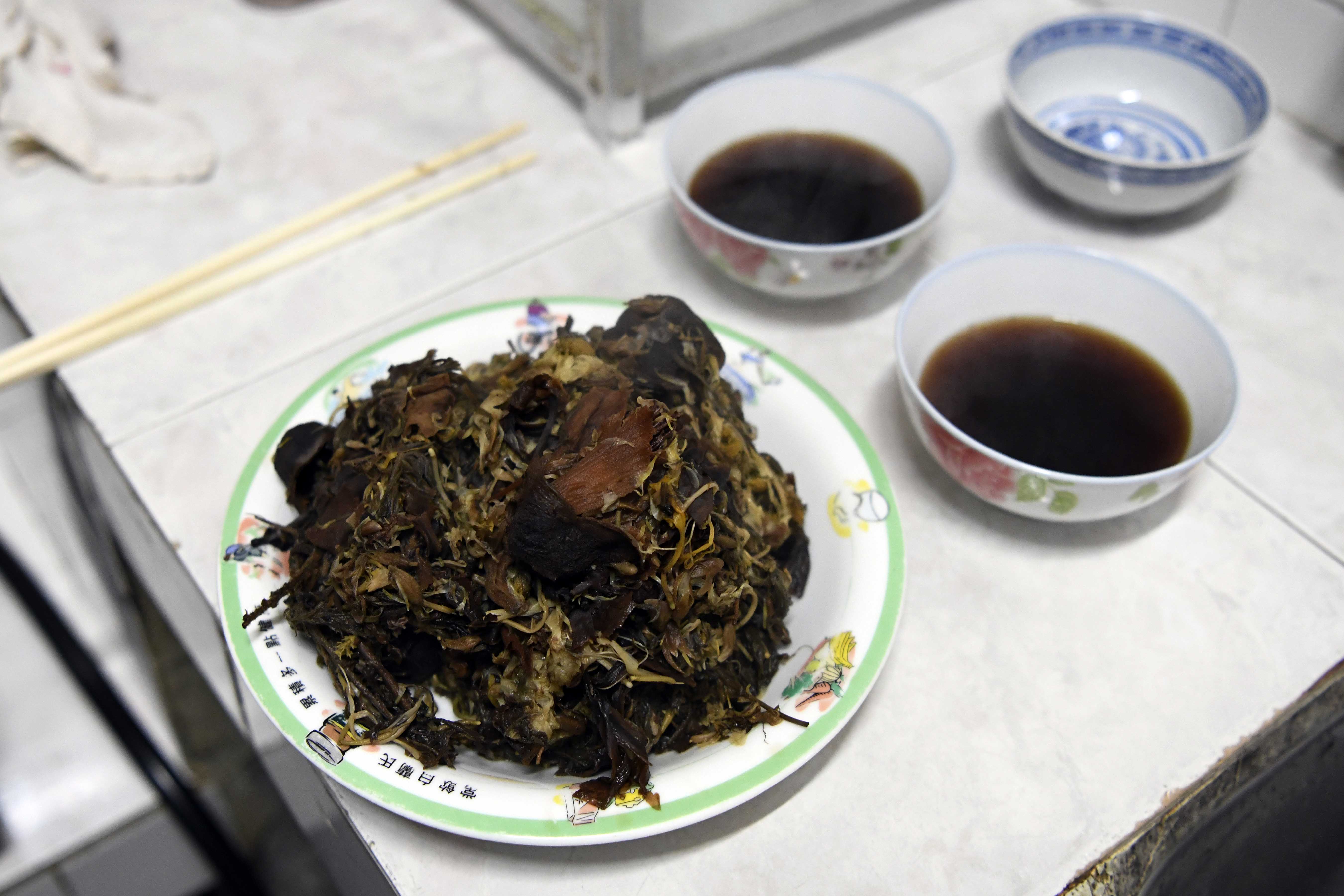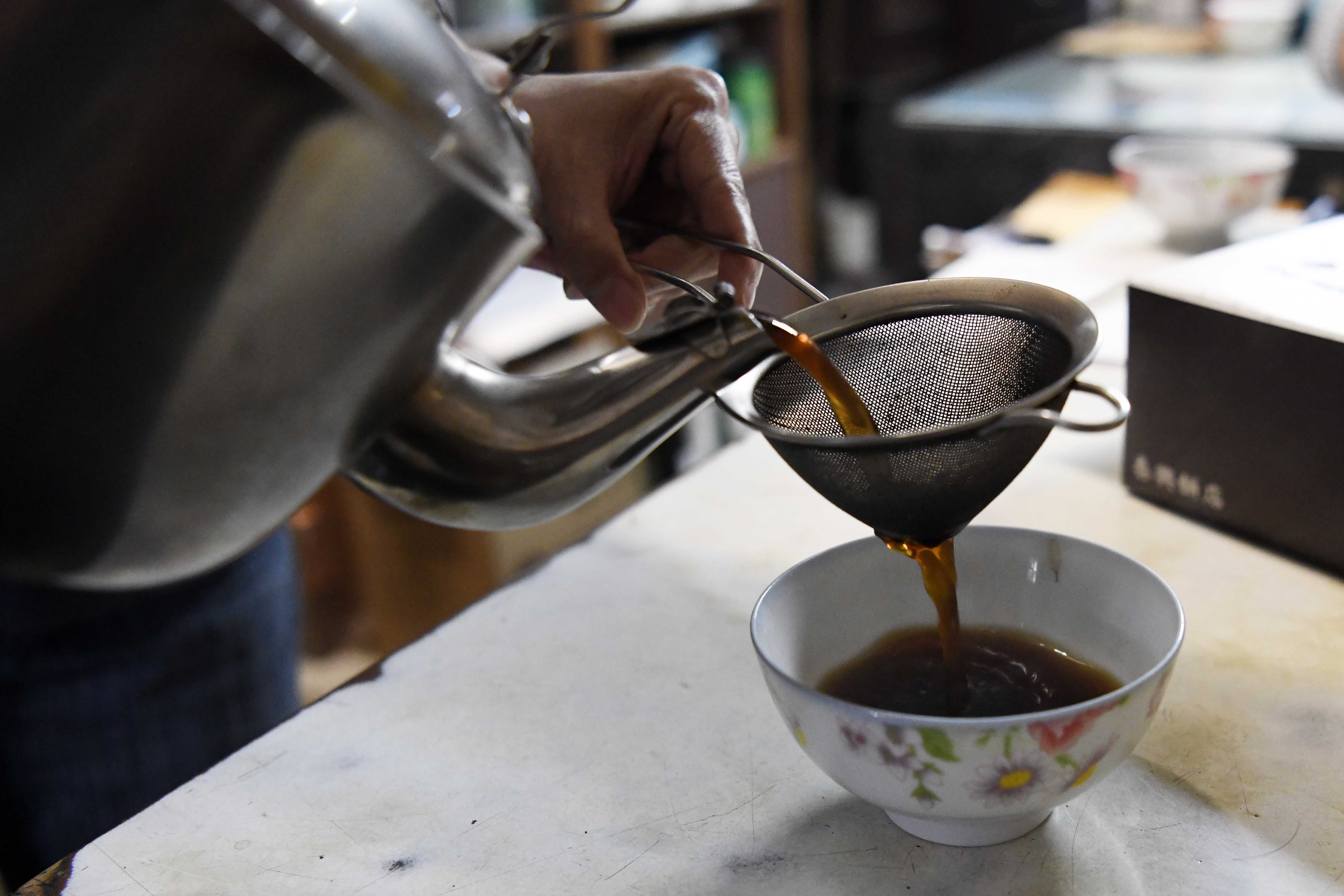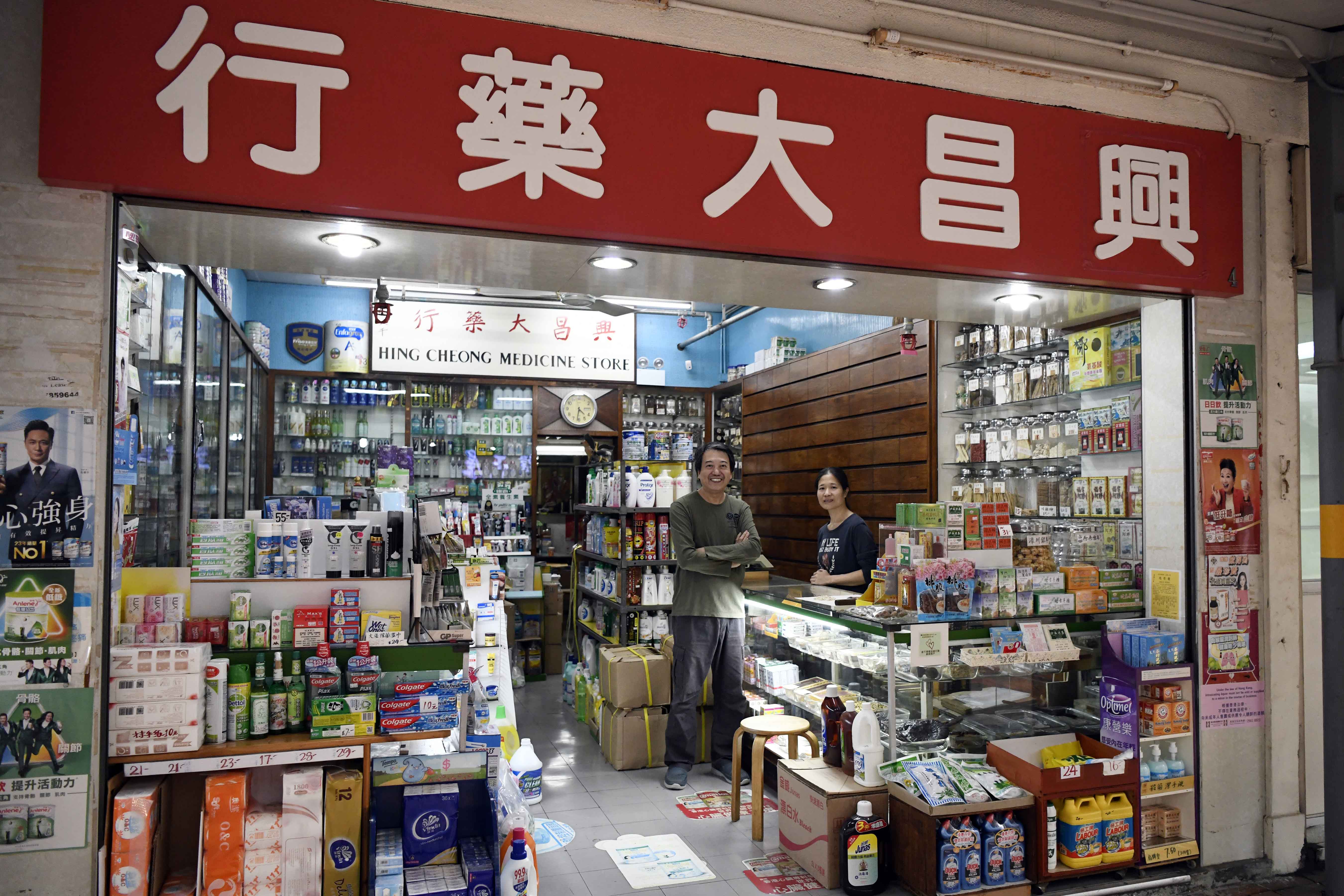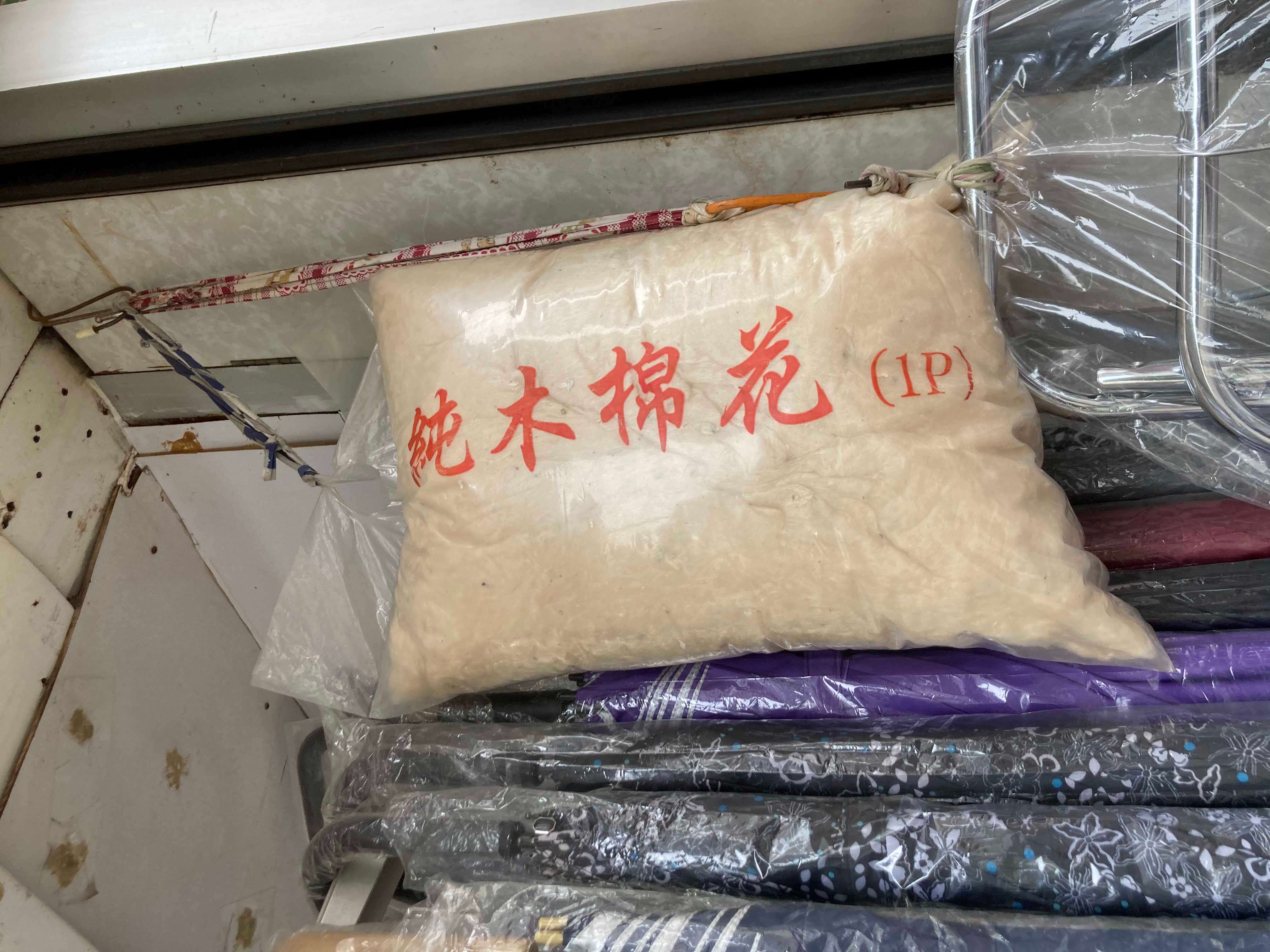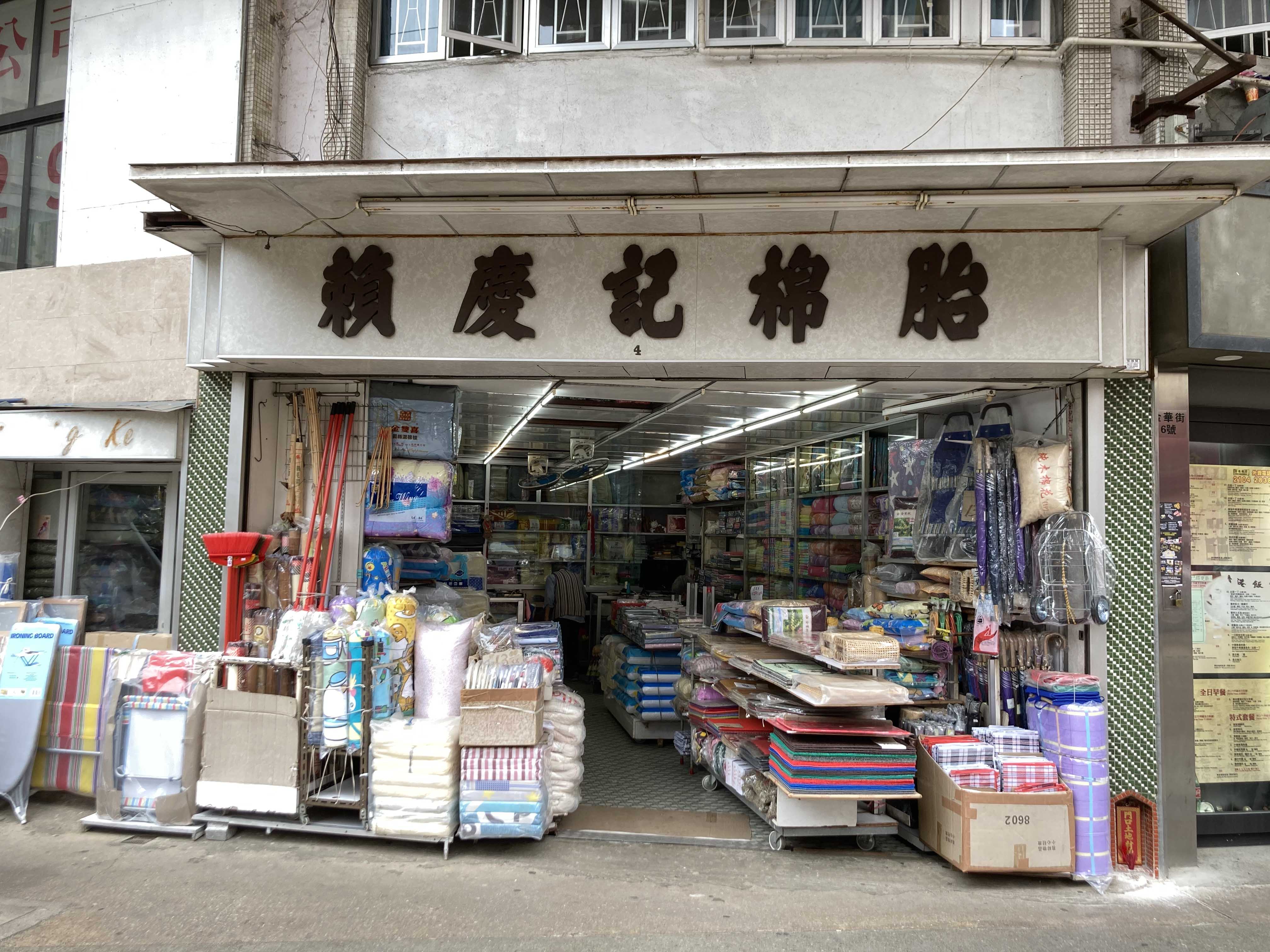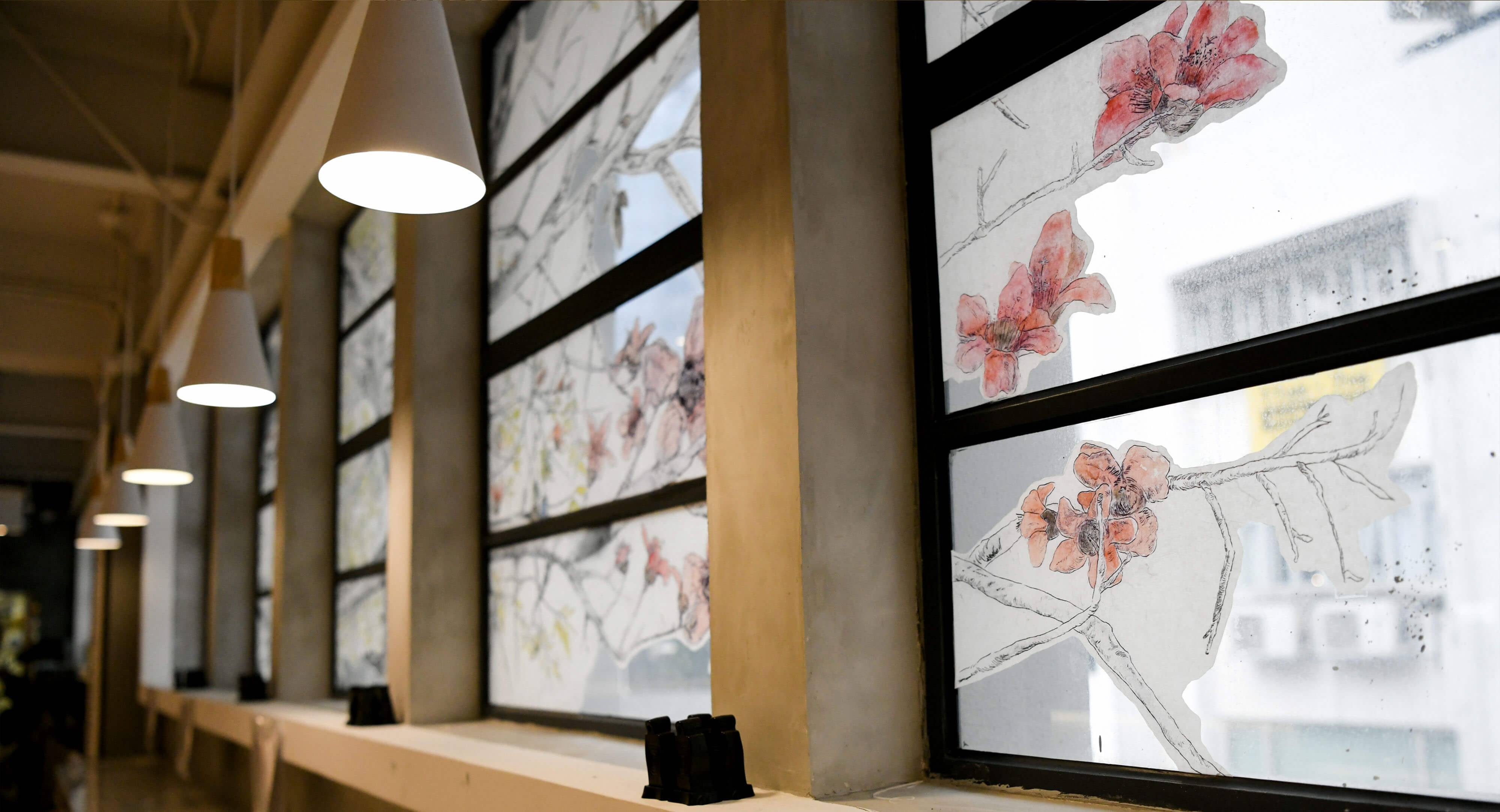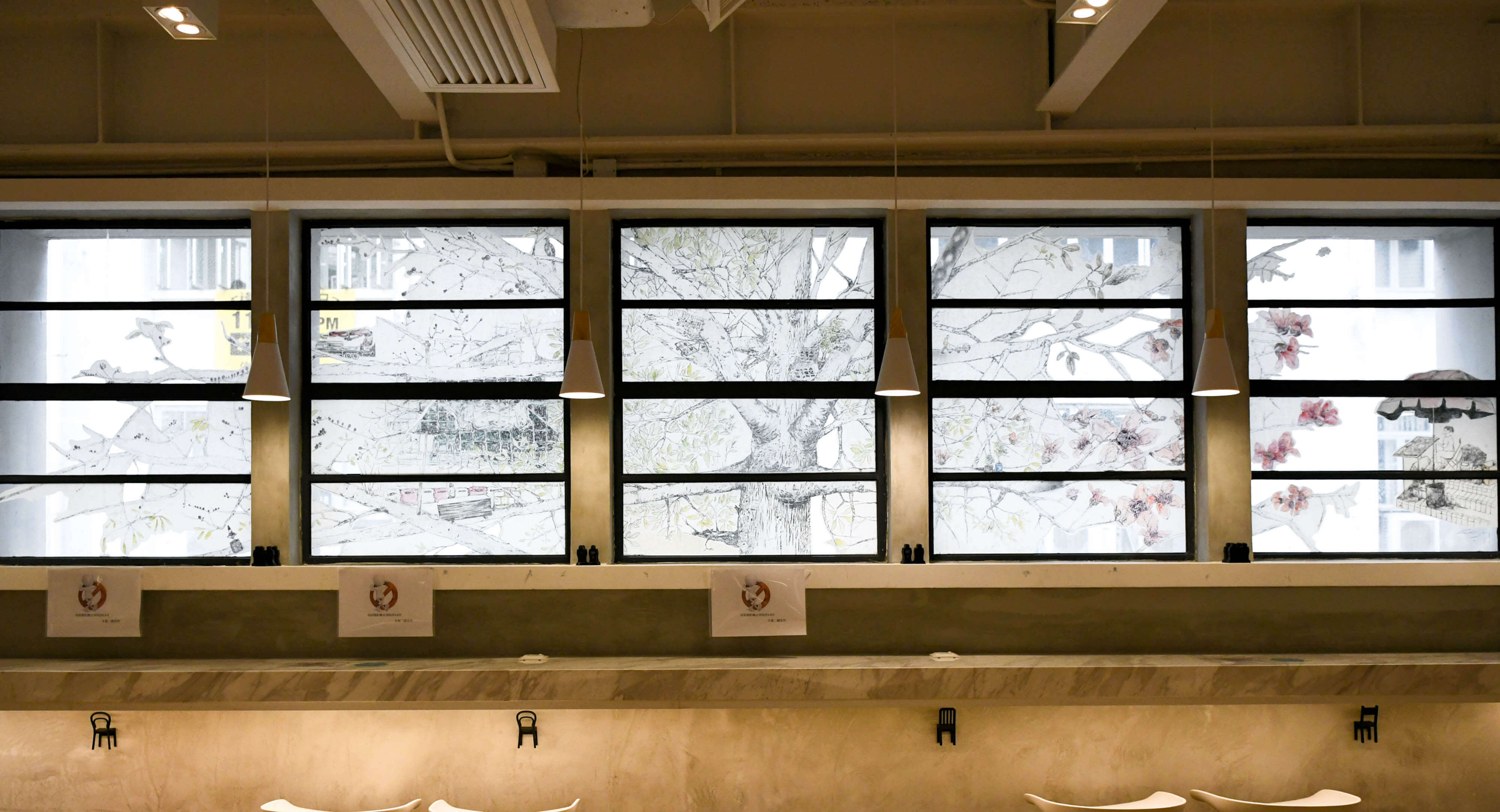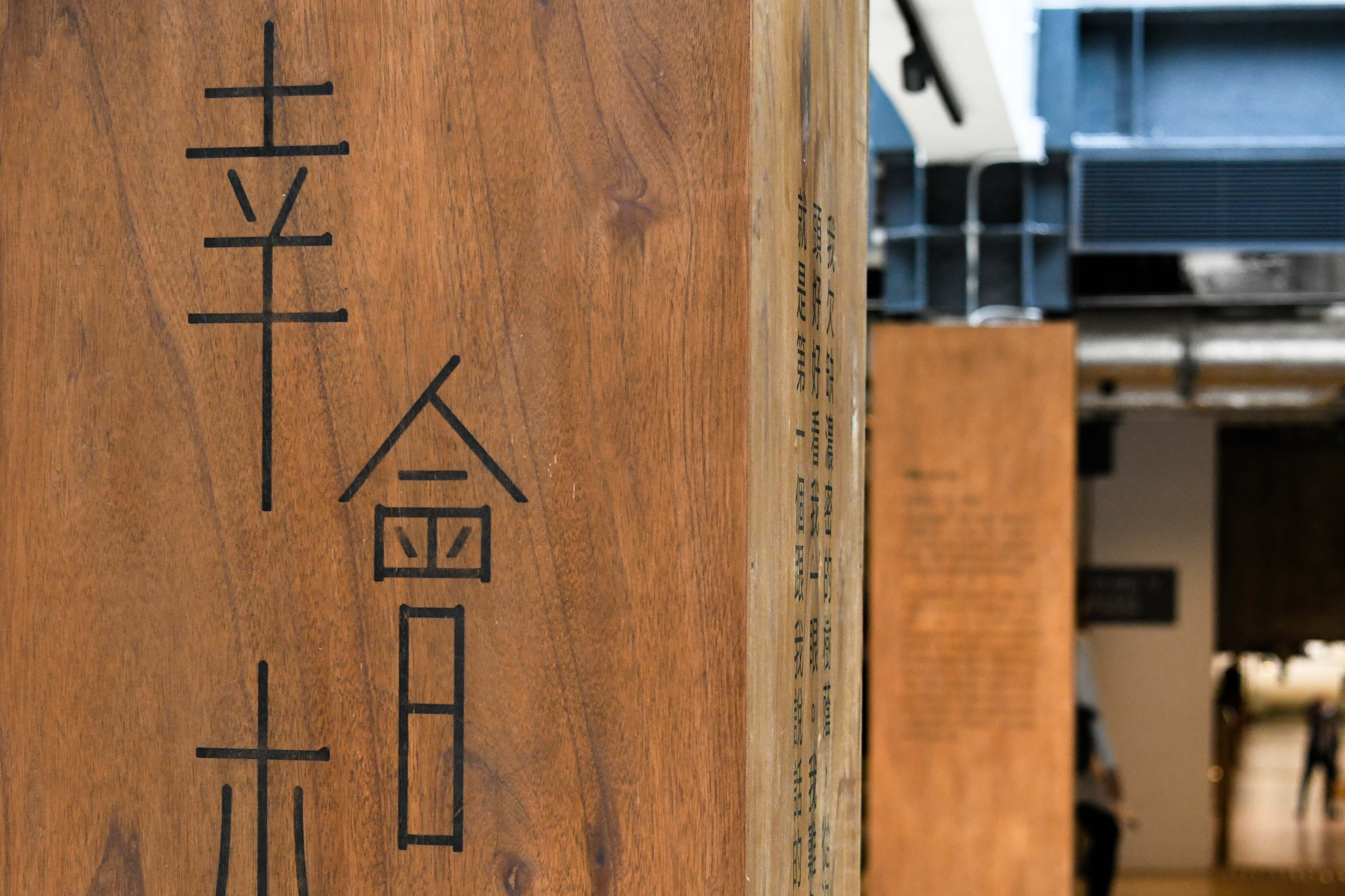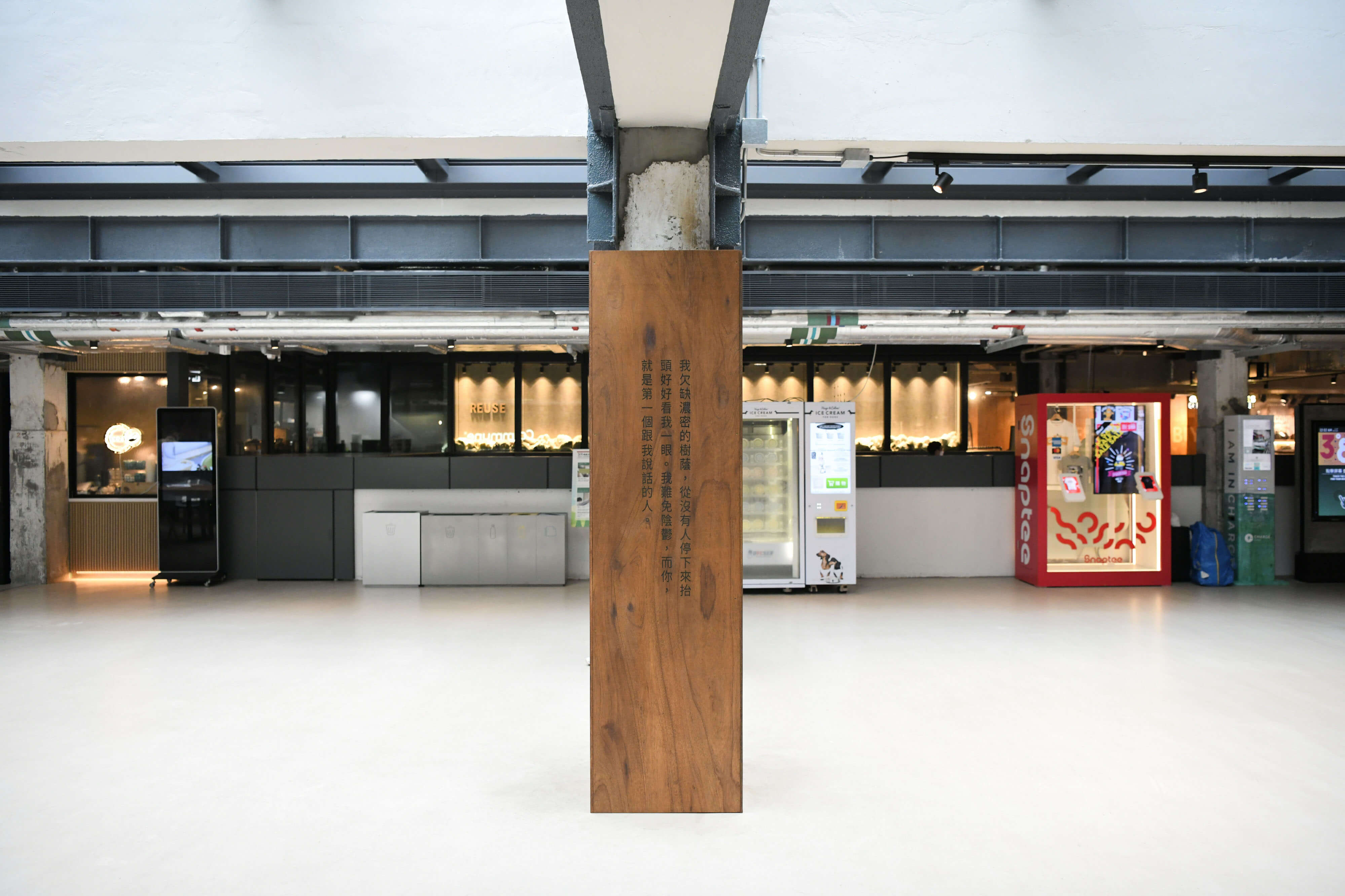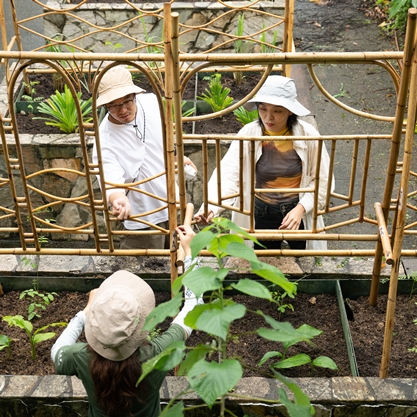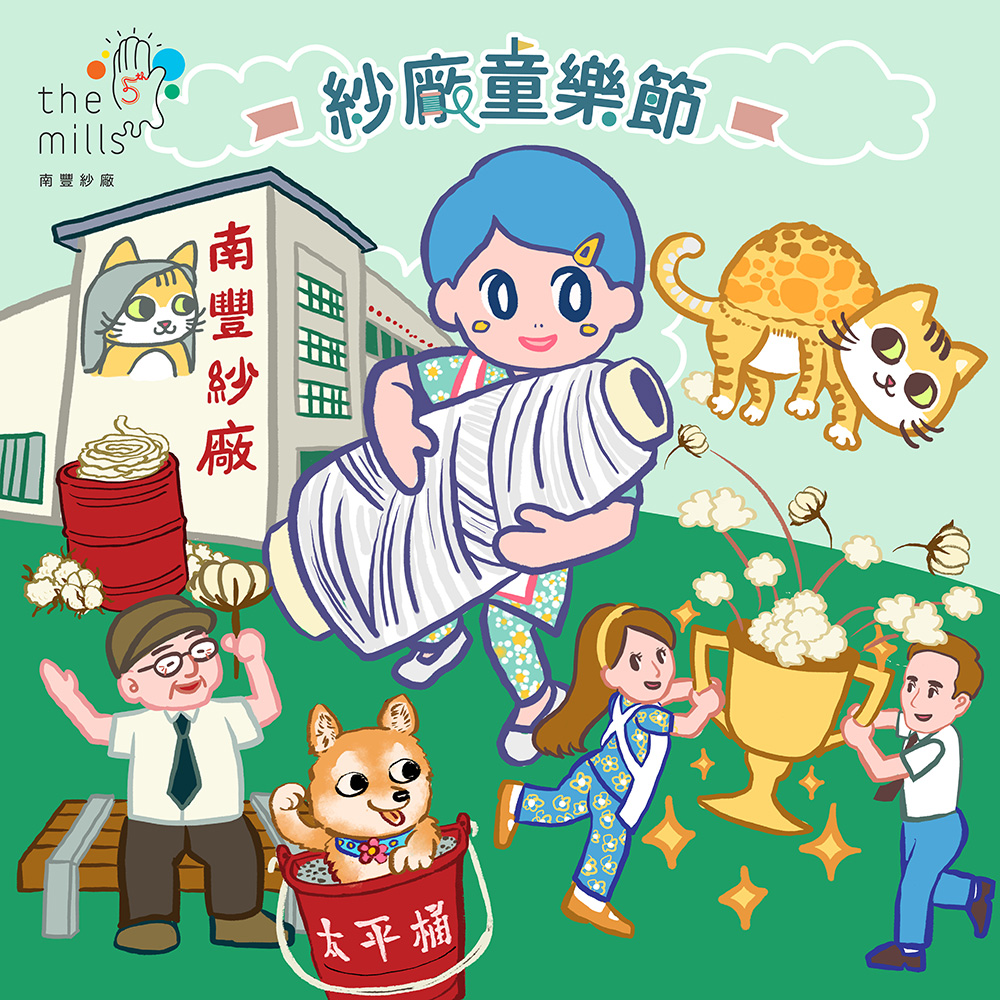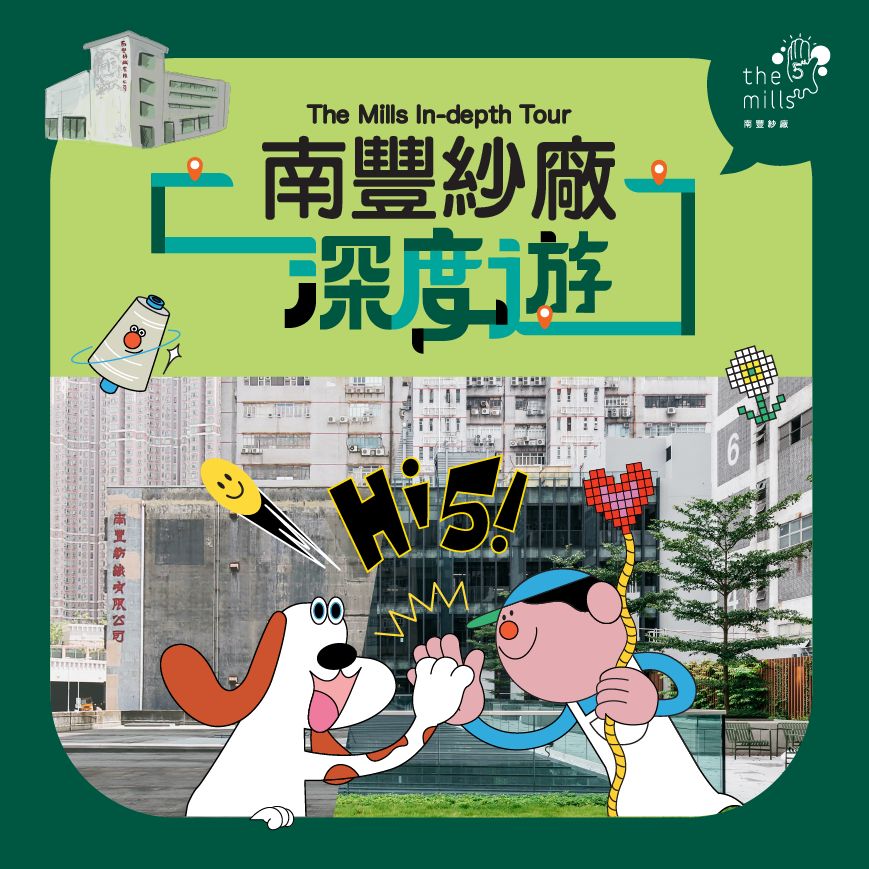Nice to Meet You Kapok!
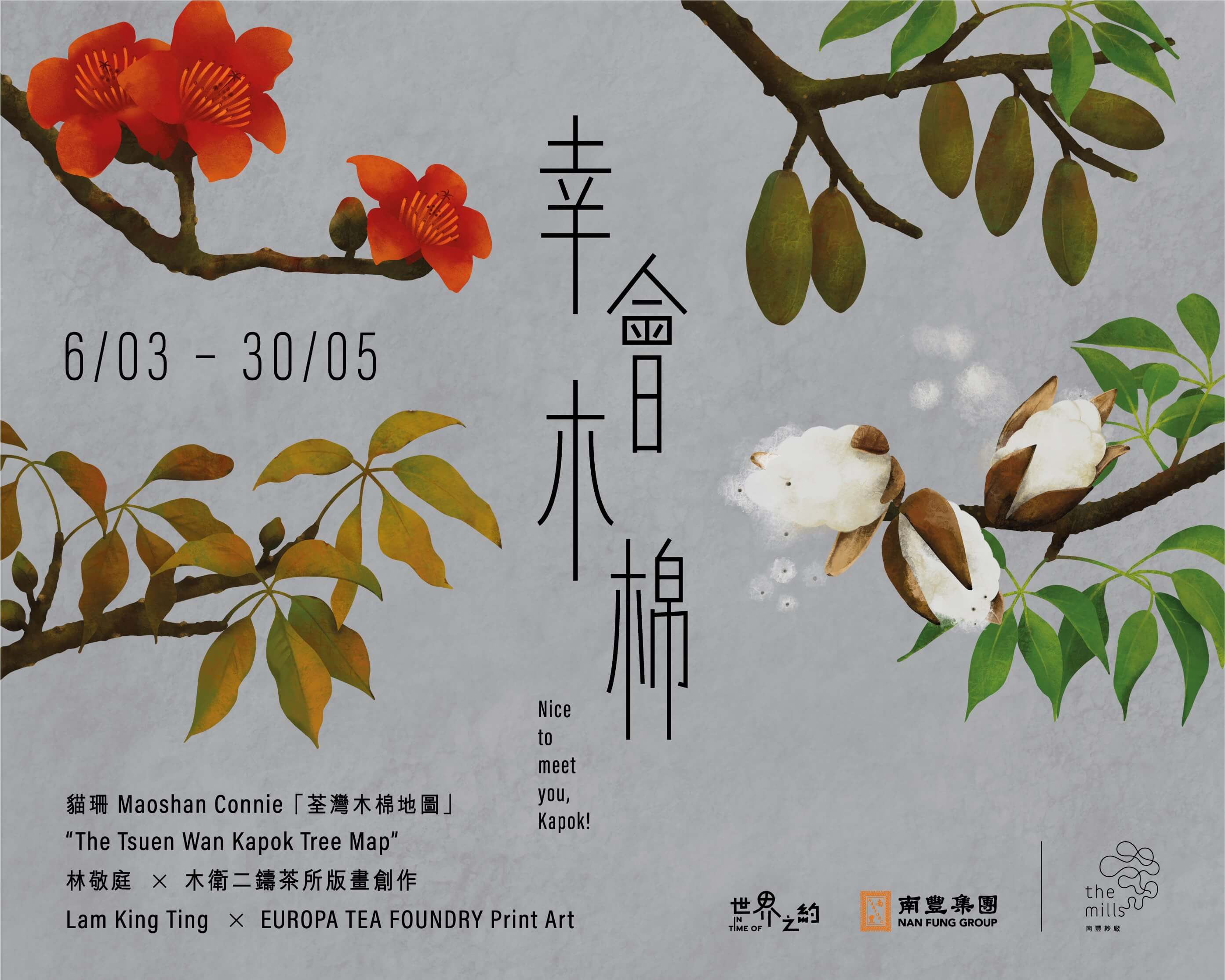
Introduction
The Mills curated the “Nice to Meet You Kapok!” exhibition, in which kapok trees serve as an introduction to community study and a reminder to all of us to live our lives mindfully. The people on the street come and go, leaving the beautiful trees unnoticed. Collaborating with several art units and local shops, the exhibition is going to showcase kapok trees in Hong Kong and its usage in our livelihood.In Time of

Aspiring to empower the community with the goals of accumulating social capital in the neighbourhood, advocating sustainability, and reshaping a continuous relationship that bridges humanity and nature. The Group will partner with a diversity of social stakeholders including non-profit organisations, social enterprises and community designers through “In Time Of” to develop sustainable community programmes, realise social empowerment and improve the efficiency of resource utilisation in the hope of creating a more resilient future for local neighbourhoods.
Exhibition Concept
The popular concept of “human-tree symbiosis” is not just about people and trees existing in the same space, but also about how they live together in harmony. Pedestrians come and go on the street, and the kapoks around are often left unnoticed. Humans and kapok trees may not interfere each other in their life respectively, but when the kapoks are in full bloom and bear fruits for reproduction, people often complain about the fluffy kapok fibres flying in the air. Conflicts between trees and humans arise, and some people suggest sterilising or even felling the trees. Shall we listen to the nature for now and share our community with our trees?
In “Nice to meet you, Kapok!”, The Mills seeks to encourage our audience to observe and appreciate the kapoks and the other trees in our community. In the exhibition, kapoks allow us to explain the importance of a diverse and balanced community. We have invited the Conservancy Association to introduce the local species of kapok trees and the man-made threats they face. We will explore how kapoks can integrate into our daily life in various aspects – namely clothing, food, living and transport – and figure out the intersections between humans and kapok trees.
“Clothing”: Extract the pigments from fresh kapok flowers. Apply it as a natural dye on fabrics and clothes.
“Food”: Use dried kapok flowers as an ingredient for five-flower tea, a traditional herbal remedy for heatiness and dampness.
“Living”: Make pillows with the fibres in kapok fruits.
“Transport”: Draw a map of the kapok trees in Tsuen Wan with local illustrator Maoshan Connie. Revisit the trees, oral history and stories of the area.
After entering The Mills from the Pak Tin Par Street entrance, take the lift upstairs. Visitors are greeted with the kapok-glass work by Maoshan Connie and Caritas Jockey Club Artkids Studio. Walk straight ahead and enter the atrium on the first floor, there is a textual work quoted from Chan Wai’s short story on the memories and imaginations of kapoks. The shop window of Europa Tea Foundry displays the prints by local printing artist Lam King Ting on the relations between kapok trees on Pak Tin Par Street and the pedestrians. Visitors can use rubber stamps and woodcut blocks to print their own kapok trees on papers and sow the seeds of friendship with kapoks.
Kapok trees have always been there. It is an honour to be aware of and cherish their existence and our bond with the world.
Tree Cotton (Kapoks)
Tree Cotton (Kapoks)The Conservancy Association
February to March is a great time of year for flower gazing in Hong Kong. Tree Cotton (Bombax ceiba, 木棉), are commonly seen in the urban areas of Hong Kong. Tree Cotton belong to different species as Floss Silk Tree (絲木棉) and Silk Cotton Tree (吉貝木棉). Floss Silk Tree and Silk Cotton Tree have green trunks, while Tree Cotton are grey.
Colloquially known as the “hero trees” in Hong Kong, Tree Cotton trees get the name for their straight and sturdy bodies, and they are associated with the stories of some national heroes. Their eye-catching red flowers remain on the branches even after all the leaves have been shed. Tree Cotton has noticeable thorns. Older Tree Cotton is less spikey than the younger ones, as if they had developed a smoother character after years of experience.
Their flowers can tell how resilient Cotton Tree is under harsh conditions. Flowers exposed to intense sunlight over time develop UV-resistant pigments, as anthocyanins work to adapt to the new environment. Some Tree Cotton trees may therefore have yellow or orange blossoms, though they are genetically identical to their counterparts with red flowers and belong to the same species.
Flowering is a natural reproductive process of plants, so the red flowers of Tree Cotton are attractive. Tree Cotton bears fruit every April and May. Inside the large, hard seedpods are seeds. As seeds fall right under the trees, tree overgrowth or a lack of sunlight under the shade can cause deaths of young seedlings. To reproduce themselves, it is vital for trees to send their decedents away. Instead of relying on other medium to carry their seeds, Tree Cotton disperses the seeds with fibres that float in the wind. Cotton like-fibres fly in the wind, so some people may find them annoying as they may hit one’s face when they are outdoors. Many people are worried that fibres of Tree Cotton can cause respiratory diseases. Specialist (Ho, 2017) says that matters like impurities, dust and moulds in fibres of Tree Cotton can cause allergies. Many plants like Yellow Poinciana (盾柱木), African Tulip Tree (火焰木) and Yellow Pui (風鈴木) flower at the same time as Tree Cotton releases the fibres into the air. The fibres of Tree Cotton are clearly visible while pollens of other plants are not, so people often blame the Tree Cotton for causing allergies. They would remove the unopened fruits of Tree Cotton before the fibres releasing into the air. However, as Tree Cotton can bear more fruits in a month or two, people had to remove the fruits time after time. So removal of fruits from Tree Cotton does not just disturb the reproduction; it is also a waste of effort if the fibres from Tree Cotton are not the major allergens in the air.
The fibres of Tree Cotton may annoy some people, but in fact, Tree Cotton is a great treasure: Tree Cotton is one of the major greenery species as they can alleviate the heat island effect and remove air pollutants. Their wood makes good firewood and can be made into food steamers. The flowers are ingredients of five-flower herbal tea. The fibres of Tree Cotton were once used as a substitute for cotton in medical products like pillows, as patients may be allergic to cotton; and seed oil can be extracted for making soap or lubricant.
Tree Cotton is an important urban tree resources. They are our unsung heroes as their contributions should be celebrated.
Reference:
Ho, Terrie[何的煒醫生].(2017). 木棉絮 真的與鼻敏感有關係嗎? Retrieved from https://www.drterrieho.com/single-post/木棉絮真的與鼻敏感有關係嗎
#Nicetomeetyoukapok IG Competition
JTNDaWZyYW1lJTIwc3JjJTNEJTIyaHR0cHMlM0ElMkYlMkZ3d3cuZmFjZWJvb2suY29tJTJGcGx1Z2lucyUyRnBvc3QucGhwJTNGaHJlZiUzRGh0dHBzJTI1M0ElMjUyRiUyNTJGd3d3LmZhY2Vib29rLmNvbSUyNTJGdGhlbWlsbHNoayUyNTJGcG9zdHMlMjUyRjM0MzAyMTIzNjA0MTYzNjQlMjZ3aWR0aCUzRDUwMCUyNnNob3dfdGV4dCUzRHRydWUlMjZoZWlnaHQlM0Q3MjclMjZhcHBJZCUyMiUyMHdpZHRoJTNEJTIyNTAwJTIyJTIwaGVpZ2h0JTNEJTIyNzI3JTIyJTIwc3R5bGUlM0QlMjJib3JkZXIlM0Fub25lJTNCb3ZlcmZsb3clM0FoaWRkZW4lMjIlMjBzY3JvbGxpbmclM0QlMjJubyUyMiUyMGZyYW1lYm9yZGVyJTNEJTIyMCUyMiUyMGFsbG93ZnVsbHNjcmVlbiUzRCUyMnRydWUlMjIlMjBhbGxvdyUzRCUyMmF1dG9wbGF5JTNCJTIwY2xpcGJvYXJkLXdyaXRlJTNCJTIwZW5jcnlwdGVkLW1lZGlhJTNCJTIwcGljdHVyZS1pbi1waWN0dXJlJTNCJTIwd2ViLXNoYXJlJTIyJTNFJTNDJTJGaWZyYW1lJTNFTERMS AND CONDITIONS
TERMS AND CONDITIONS OF 【“Nice to meet you, Kapok!”】INSTAGRAM COMPETITION
Once you have uploaded photos to Instagram with the hashtag #Nicetomeetyoukapok and location pinned @themillshk, it is assumed that you have read, understood and agreed with the following terms and conditions:
The Competition opens for Hong Kong citizen aged 18 or above (participant)
The Competition will be ended on 31 March 2021 11:59PM, all participants has to upload photos to Instagram with the hashtag #Nicetomeetyoukapok and location pinned @themillshk before the stated end time. All posting time will be judged according to the time stamp recorded by the platform.
- Upon submission of the comment, participants confirm that the s/he owned the copyright of the piece and any individuals or intellectual properties that have appeared in the comment box, and have consented and agreed to permit the participants to providing the images and personal information to The Mills Hong Kong and that The Mills Hong Kong may use the images and personal information for the purpose of this Contest. The Mills Hong Kong shall not be responsible for any liability arising from claims or suits of third parties, including costs and expenses incidental thereto, in connection with the use of the participants’ comments.
- Submitted comments must not contain content that related to obscene, defamation, racist, discrimination or in any other manner unlawful, The Mills Hong Kong has the right to disqualify the submission without prior notice.
- Upon the end of the competition, The Mills Hong Kong will select 10 most creatively elaborating the theme of 【“Nice to meet you, Kapok!” INSTAGRAM COMPETITION】 as winners.
- Each winner will be awarded with:
-
-
- A voucher for a free Kapok Honey Lemon Rice Chiffon Cake of EUROPA TEA FOUNDRY
- Total of 5【$20 The Mills Coupon 】
-
- The prize is non-transferable and non-refundable.
- Participants can submit more than 1 instagram photo but each participant will be awarded once only.
- Upon submission, participants shall agree to allow The Mills Hong Kong to have the right in using the comment for any event related promotion. Participants Instagram account will be mentioned as credit.
- The Mills Hong Kong will contact winners through Instagram inbox with the official account (themillshk) to obtain information for prize delivery. Winners must reply in full details within 5 working days or will be consider as forfeiting the prize.
- The Mills Hong Kong shall not be responsible for any loss of data or delay in data transmission due to any cause which is not under The Mills Hong Kong reasonable control, including but not limited to a breakdown or failure of communication facilities or any interruption, delay, corruption or interception of such communication.
- In case of any dispute, The Mills Hong Kong reserved the right to make the final decision.
Clothing
Beely Daily, a local fabric dyeing creative unit, used fresh fallen kapok as natural dyes on clothes in exploration of the little-known possibilities of kapok.How to dye the kapok fibres: Peel the red kapok flowers, rinse them, and put them into a stock pot, then fill with water heat up to 50-60 ºC. Kapok pigments work best in acidic environments: add white vinegar to obtain more pigments from the flowers. The colour of the flowers fades as the pigments dissolve into the vinegar-water solution and forms a pot of purple dye after simmer for 1-2 hours.
Rinse the fabric and soak it in raw soya milk for protein for 12 hours. Then hang the fabric out to dry. Soak the fabric in nutgall solution for tannin. Fabric treating 2 hours in medium temperature, soak the fabric in alum solution for 6-12 hours (the alloy is an aluminium ion). These three substances ensure better dyeing effect.
Put the fabric into the hot dyeing solution for 2 hours. Then hang the fabric out to dry. Mordant the fabric. Repeat the process until the colour turns darker.
Food
The Mills also partnered with the 57-year-old Hing Cheong Medicine Store in Fuk Loi Estate, Tsuen Wan, to make Chinese herbal Five Flower Tea and talk about kapok’s therapeutic effect of natural detoxification. In addition, The Mills’ tenant Europa Tea Foundry created an exclusive dessert, the kapok cake, that imitates the shape of kapok and surprises you with the taste.We interviewed Mr Lai, the owner of Hing Cheong Medicine Store (興昌大藥行) which operated in Fuk Loi Estate (福來邨) for 57 years as he was preparing his five-flower tea. He recalled how he made his first five-flower tea during his first camping trip when he was studying secondary school. In one evening, he brought the ingredients to the barbecue stove and prepared his five-flower tea as a remedy for summer sickness.
Mr Lai also recalled his visits to Mills 2 and 6 of Nan Fung Cotton Mills many years ago. Back then, the factories would order first-aid supplies from the pharmacies regularly. He would push carts of goods from Hoi Pa Street to Pak Tin Par Street. What he still fondly remembered was the concrete staircase painted in green.
In addition to five-flower tea, Mr Lai also introduced a recipe made from kapok flowers – a congee for removing dampness. (Refer to the programme booklet for details.)
There are five or six ingredients of five-flower tea, namely:
1. Kapok flowers
2. Virgate wormwood (茵陳)
3. Kudzu flowers (葛花)
4. Frangipanis (雞蛋花)
5. Chrysanthemums (菊花)
6. Japanese honeysuckles (金銀花)
How to prepare:
1. Rinse to remove the dust on the ingredients.
2. Add 7-8 bowls of tap water into the pot.
3. Pour the ingredients into the pot. Turn the stove to medium-high.
4. When the water boils, turn the heat down to medium heat. Heat the tea for 20-25 minutes.
5. Add slab sugar (optional).
Living
When most people are crazy about pillows made by memory foam in large chain stores, The Mills will lead you to the time-honored homeware store Lai Hing Kee, recalling the time when kapok was also used to make pillows and how important it was to our living.Kapok is not cotton.
Kapok trees are often referred to as cotton trees, are tall and bear oval capsules containing cotton-like fibres. The cotton fibres we used daily come from shrubs belonging to the Malvaceae family, and the fibres come from the bolls.
A kapok tree can produce up to 20 kg of fibre every year. The fibres are not used in the commercial weaving industry as the fibre’s surface is too smooth to be machine spun into yarns. Kapok fibres are useful to fill mattresses, pillows, and cushions. The fibres are hollow and have a buoyancy of 20-30 times their own weight, making life jackets before the invention of artificial fibres.
from Edith Cheung’s article on kapok in 《布頭布尾》Textile Tales, 2014
Edith Cheung is an advisor to CHAT, Centre for Heritage, Arts and Textile
The kapok pillow comes from Lai Hing Kee Embroidery in Shau Kei Wan district. They started making these pillows before the 1960s. Pillowcases were made with sewing machines, then filled with kapok fibres, making pillows with good permeability.
Kapok pillows are soft and go flat over time; customers can buy kapok fibres to refill.
Audio Description
Clothes
Food & Living
The Tsuen Wan Kapok Tree Map
The Tsuen Wan Kapok Tree Map
The Tsuen wan kapok tree map is created by local illustrator Maoshan Connie. It is crafted with an intention as a story map, drawn from an oblique aerial angle, it hopes to allow the neighbors to recognize their neighbourhood, through depicting not just the main roads like a normal map would do, but also the actual appearance of buildings, trees, flyovers, seaside and trees.
Throughout the year long process of making, we collected stories in the neighbourhood, and more importantly, carved space for the community to participate through writing and drawing in the next stage – so to make it a story map created together by both the artist and the people.
10 kapok trees which are drew by participants of kapok tree sketch tour will be inserted on the map. This hopes to invite publics to participate in Tsuen Wan Kapok Map creation.
Oral History
Oral History
- Uncle Tree in Jockey Club Tak Wah Park
Located in the heart of Tsuen Wan, Jockey Club Tak Wah Park is home to myriad trees of different species. There is an old, frequent chess player who can name every kind of tree. He said he was a retired teacher, passing time by playing chess with his neighbours.
There are kapok trees, big-leaved figs, yew plum pines, candlenuts, frangipanis, ginkgoes, sweet osmanthuses, Queen’s crepe-myrtles, redhot cat-tails and ivy trees, among others.
Uncle Tree has lived in Tsuen Wan for sixty years.
- The Monks Living Under the Banyan
There are many Buddhist temples on the mountainside.
The couplets at the entrances are the works of intellectuals from the Late Qing Dynasty and Early Republic of China.
- School Uniform
We were exciting when we moved to Fok Loi Estate 55 years ago.
Before that, the ten of us had been living in a “tong lau” in Kowloon.
I got my first ever tailor-made school uniform in a hut in Muk Min Ha Tsuen. I still remember the joy of that; until then, I had been mocked by my neighours’ daughter for wearing a uniform of the wrong size.
- Come Here to Feed the Mosquitoes
I had been living in a “tong lau” in Kowloon before I was relocated to Fok Loi Estate in Tsuen Wan. I did not even know where to get my shopping done.
Back then, no one would be the first to move into the new estate. There were lots of mosquitoes.
I didn’t get used to living in Fok Loi Estate.
Phone calls from Tsuen Wan to Kowloon were charged as long-distance calls.
- Stink
We used to live in a squatter area. There were noodle stalls, tea stalls, and a tofu factory. It used to stink in the squatter area and Tai Chung.
- Boil Some Floral Herbal Tea
My grandmother used to collect kapok tree flowers and dry them on her balcony. Dried kapok tree flowers can be drunk with water. They are also the main ingredient in floral herbal tea.
- Tsin Wan
To get to Tuen Mun from Kowloon, one must go through Tsuen Wan. Back then, Tsuen Wan was known as Tsin Wan, because there was nothing except for a shallow bay.
To sell their goods in Kowloon, people from Yuen Long would have to travel through Tsuen Wan.
During the construction of the MTR in the 80’s, the government temporarily moved the original settlers to the hills.
Lo Wai Tsuen has two or three centuries of history.
There were no trees when the land first reclaimed. It gradually became vegetated over the years.
- Foul Sewers – There Was Not A Tree
I live in Fok Loi Estate. There are lots of trees in the area. We all love sitting and talking under the trees.
“It’s quite soothing with the trees. The air smells fresher and we’re all healthier,”
There used to be no trees.
It used to be a river mouth twenty or thirty years ago.
Everyone was poor.
Tai Chung Road, now dotted with trees, used to be a barren mudflat.
- A Sacred Tree in Pak Tin Par Street
The branches of a kapok tree peeped out from the construction site, its stout trunk protected by a scaffolding, its roots hidden from sight.
I went into the site to enquire. Two hard hatted workers pointed to their senior.
“Is the tree obstructing your work?” I asked.
“Not at all. We love the tree – I love it more than my own wife,” He said.
There was a fire onsite in 2019. Still the tree stood, towering and rigid through it all.
- The Kapok Trees by the Hills
In 1950, the land was reclaimed and turned into an industrial area.
It used to be a long bus journey from Jordan Road Ferry Pier to Tsuen Wan.
Though an industrial area, Tsuen Wan then still felt like a rural village.
The kapok trees had been around all along.
- The View on The Mountainside
I was living in Castle Peak Road then. I didn’t have a house number except for a section number.
I lived in a “tong lau” without a lift.
The place was no stranger to dodgy characters and drug addicts.
Outside the window, the view was filled by strips of agricultural land, the mountainside of Fu Yung Shan punctuated by the Chinese character “buddha” in red – signifying the temple.
One could even see the structures that dotted Tai Mo Shan.
Every summer, the erratic season manifested in rainfall rolling down the hills. The river rose. The streets turned into an ocean. The rain crept its way into our windows.
Maoshan Connie
Maoshan ConnieCurrently, she is working as a full time picture book and community map artist.
She founded an online tree conservation mailbox in 2014, for people to write love letters to trees in the city.
Connie has participated in both local and international exhibitions, her most recent solo exhibition was: “A special spring exhibition at Museum of Picture Book Art: This is where Maoshan Connie began her journey” at Hachi & Seizo Tashima Museum of Picture Book Art in Japan.
Published Books:
Harcourt Village Scroll (2015)
The Last Farewell (2017)
Tabby Cat’s Styling Office (2019)
Deserve(2020)
Mr. Rush & Ms. Slow (2020)
Audio Description
Tsuen Wan Kapok MapJockey Club Tak Wah Park
Shek Pik New Village
Yeung Uk Road
Fuk Loi Estate
Chai Wan Kok Rest Garden
A cotton tree venture
Kapok trees come into full bloom every March. The bright red flowers allow us to revisit and appreciate the unique ecology of the urban space. Kapok trees fall onto the pavement of the industrial area, a landscape different from their place of origin. These trees try their best to grow in the rapidly developing city. A kapok tree growing on the narrow pavement is a defiance against the inevitable development of urban space.
When I first saw the kapok tree on Pak Tin Pa Street, the tree was in an unsafe location, surrounded by construction sites and covered by scaffolding for a long time. However, the tree is so resilient that the tree lives on, even though the buildings next to it are taller and cover half of the tree canopy.
The work is presented on a large glass window facing Pak Tin Par Street. It features a series of prints collaged onto the window. The work re-produces the branches of the tree on Pak Tin Par Street, which are shorten due to the obstruction by the buildings. The work also expresses the living environment of the tree and people on the street and explores how trees adapt to urban life. It is a depiction of the characteristics of urban and natural objects.
Lam King Ting
Lam King Ting is the co-founder of Marble Print & Clay studio focusing on printmaking arts. Lam graduated from the Education University of Hong Kong in 2014. His works are collected locally and overseas.Lam is a printmaking artist who is influenced by materials from natural environment, especially the Ceiba trees near his living place. This has led him to explore themes of coactivity between human and nature, self-awareness and symbolism.
The Ceiba is an important symbol in Lam’s artwork of denoted as the “Tree of Life”. The mythologies portray the Ceiba as a benevolent living structure, protecting and shielding the beings in the tree’s habitat. Turning to distant and archaic ideologies, the artist reminds contemporary audiences of the forgotten and discarded nourishments that nature continues to bestow.
Audio Description
A Cotton tree venture – Lam King Ting

